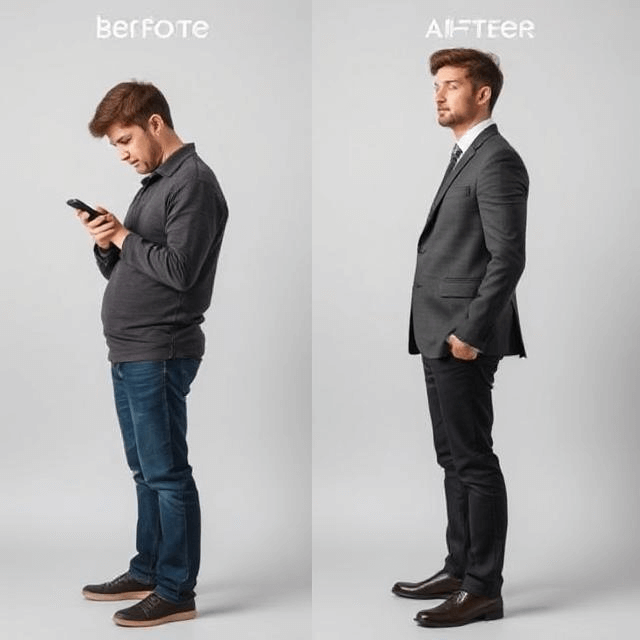The Science of First Impressions: How to Make a Lasting Impact
Introduction:
In life, first impressions can be the key to unlocking opportunities, be it in personal relationships, career advancements, or professional networking. In fact, studies show that people form judgments about others in the first 7 seconds of meeting them. These snap judgments are based on appearance, body language, tone of voice, and more, leaving little room for second chances.
But here’s the good news: You can master the art of first impressions! In this guide, we will delve into the science behind first impressions, the key factors that influence them, and actionable tips that will help you leave a lasting impact on everyone you meet.
What Are First Impressions?
A first impression is the initial perception or judgment someone forms about you when they meet you for the first time. It’s a split-second evaluation based on a combination of factors, including appearance, behavior, body language, and tone of voice. These impressions are often formed subconsciously, and can influence how people perceive you throughout your relationship with them.
But why is it so crucial?
Why Are First Impressions So Important?
- The Power of Instant Judgments:
First impressions are often irreversible. Once an opinion is formed, it can be difficult to change. In professional environments, first impressions often determine whether you’ll be hired, trusted, or respected. Whether it’s for a job interview, a business meeting, or a social event, the initial judgment people form will stay with them, impacting future interactions. - Social and Professional Success:
People tend to judge quickly based on what they see and feel. Studies indicate that non-verbal communication (like body language) has a stronger influence on first impressions than what we actually say. This is why dressing well, maintaining good posture, and having confident body language are all important in creating a positive impression. - Trust and Relationship Building:
The ability to build trust, rapport, and a connection starts with a good first impression. If you come across as confident, approachable, and empathetic, people are more likely to trust you and be open to developing a relationship.
The Science Behind First Impressions
Understanding the science behind first impressions can give you an edge in making a positive impact. Here’s what happens on a psychological level:
- The Brain’s Automatic Judgment System:
When we meet someone, the brain immediately starts processing visual and behavioral cues. This helps us assess whether the person is trustworthy, friendly, or even dangerous. The brain makes these judgments in milliseconds. The amygdala (the brain’s emotional center) is responsible for this rapid decision-making process. These judgments are often hardwired based on evolutionary instincts. - The Role of Mirror Neurons:
Mirror neurons in the brain help us pick up on other people’s emotions and behaviors. They make it possible for us to mimic or “mirror” the emotional state of others. If someone is smiling and exuding positive energy, we are likely to mirror that energy and feel more comfortable around them. This is why a genuine smile can instantly create a positive first impression. - Cognitive Biases:
Cognitive biases like the halo effect and confirmation bias can also influence first impressions. For example, if someone appears well-dressed and confident, the halo effect might cause us to assume they are also competent, intelligent, and capable, even if we don’t know them well. Once we make a first impression, we often look for evidence to confirm our initial judgment, which can influence the trajectory of the relationship.

Factors That Influence First Impressions
1. Appearance: How You Look Matters
They say you don’t get a second chance to make a first impression, and when it comes to appearance, this rings true. The clothes you wear, your grooming habits, and how you present yourself to the world are all key factors that can influence the way people perceive you.
- Clothing: Your choice of clothing sends signals about your status, personality, and attention to detail. Dressing appropriately for the occasion (whether formal, business casual, or casual) can help you make a positive impact. When you look sharp, you feel confident, which in turn affects how you interact with others.
- Grooming: Cleanliness and grooming are essential. When you’re well-groomed, it shows that you respect yourself and others, which reflects positively on your character.
- Facial Expressions: A genuine smile can work wonders in making a first impression. Smiling conveys warmth, friendliness, and approachability. Studies show that people are more likely to remember and positively judge those who smile during their initial meeting.
2. Body Language: Speak Without Words
Your body language often speaks louder than your words. Non-verbal cues can either reinforce or contradict what you’re saying, making them crucial in forming first impressions.
- Posture: Standing or sitting up straight indicates confidence and openness. Avoid slouching, as it can make you seem disinterested or insecure.
- Eye Contact: Maintaining good eye contact demonstrates attentiveness and sincerity. Too little eye contact can make you appear evasive, while too much can be intimidating.
- Gestures: Hand gestures and movements can convey excitement, emphasis, or nervousness. Keep gestures natural and aligned with your words to create a harmonious interaction.
3. Tone of Voice: What You Say and How You Say It
Your tone of voice plays a crucial role in first impressions. The way you speak—whether confident, friendly, or authoritative—can greatly influence how people perceive you.
- Volume and Pace: Speaking too loudly can come off as aggressive, while speaking too softly can make you seem unsure. Aim for a clear, steady, and moderate tone.
- Inflection and Warmth: Use warmth and positivity in your voice to convey confidence. A warm, friendly tone encourages people to feel comfortable and open to connecting with you.
4. Behavior and Social Skills
How you behave around others also impacts first impressions. Key factors include:
- Confidence: Confidence attracts people and makes them feel comfortable. However, overconfidence can come across as arrogance. Aim for a balance where you believe in yourself but remain humble.
- Respect for Personal Space: Respecting personal boundaries shows you are considerate and aware of others’ comfort. Invading someone’s personal space can lead to discomfort and a negative impression.
- Engagement: Active listening and showing genuine interest in others are traits that create a positive first impression. People appreciate being heard and understood.

How to Make a Lasting First Impression
1. Be Authentic
Authenticity is the key to building trust and making a lasting first impression. People are drawn to those who are genuine and not trying to put on a façade. When you are yourself, others feel more comfortable around you, which creates an atmosphere of openness and respect.
2. Show Enthusiasm and Positivity
An enthusiastic attitude can be contagious. Show excitement and positivity, especially during the initial interaction. People tend to remember individuals who exude a sense of energy and enthusiasm, as it reflects a passion for life and a positive outlook.
3. Develop Emotional Intelligence
Being able to recognize, understand, and manage your own emotions, as well as those of others, can significantly enhance your first impression. Emotional intelligence allows you to navigate social interactions smoothly, respond to people with empathy, and handle challenges with composure.
4. Be Punctual
Arriving on time for meetings, interviews, or social events demonstrates respect for others’ time. Punctuality shows that you are organized and committed, making a positive impact right from the start.
5. Follow Up
After the first meeting, take the time to follow up. A quick email, message, or social media connection can solidify the first impression and remind the person of your conversation. Following up shows that you are professional, courteous, and committed.
Conclusion: The Power of First Impressions
First impressions are not just about how you look, but about the energy you bring into a room. By understanding the science behind first impressions and applying the right techniques, you can ensure that your first interactions leave a positive and lasting impact.
With these actionable tips and a little practice, you’ll be able to leave a strong, confident impression that opens doors to new opportunities and relationships. Whether it’s for a job interview, a social event, or a professional meeting, the ability to make a lasting first impression can change the trajectory of your life.
Remember, the best way to leave a lasting impression is to be authentic, confident, and kind—qualities that will resonate long after the first encounter.






